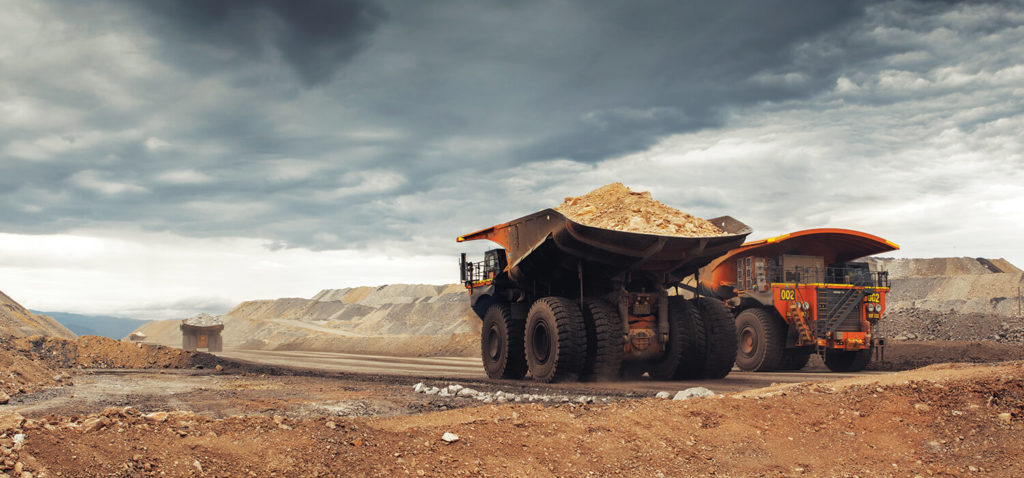At an investor day presentation last week, Whitehaven Coal Chief Operating Officer, Jamie Frankcombe, confronted the topic of autonomous haulage systems (AHS), spelling out why the Australia-based coal miner is planning to leverage this technology at its expanding Maules Creek operation in northwest New South Wales, Australia.
In what was an honest assessment of AHS performance to date, he said miners and original equipment manufacturers (OEMs) had made “broad suggestions about the scale of improvements” that came with automating equipment, but the “detailed underpinnings” of these improvements have not been disclosed publicly.
He gave a few reasons why this was the case: First, each mine is structurally different in nature, so performance metrics are not ‘one-size-fits-all’. Second, the underlying performance of each AHS fleet is proprietary information to the operator and OEM.
Despite this, productivity improvements of around 15-20% had been discussed by miners and OEMs – linked to higher availability and utilisation rates in fewer trucks being required – along with anecdotal reports of maintenance savings, tyre life improvement, equipment life improvement and safety benefits.
On the capital expenditure side, AHS was also expected to reduce fleet sizes by allowing more tonnes to be mined with existing equipment.
Frankcombe was speaking about automation at a time when the coal miner is embarking on its own AHS journey.
The collaboration between the two companies entailed scoping the delivery and commissioning of phased AHS deployment for the fleet of Hitachi EH5000AC3 trucks at Maules Creek and the establishment of the physical and technological infrastructure to support AHS capability.
The original release was short on detail, but said the AHS solution would leverage the fleet management system provided by Hitachi’s Wenco International Mining Systems subsidiary, in addition to Hitachi Construction Machinery’s Smart Mining Truck with Advanced Vehicle Stabilisation Controls using Hitachi robotics, AC motor and drive control unit technologies. The Blockage management system from Hitachi’s railway business would also play a role in this solution, as would a sensing technology and navigation system cultivated in Hitachi Group’s automobile industry segment.
In Whitehaven Coal’s results for the six months ending December 31, 2018, it said testing of the Hitachi AHS system had begun and, in August, it confirmed the first fleet trials would take place by the end of June 2020.
During Frankcombe’s presentation to investors, he narrowed down those timelines, saying the Hitachi AHS had been approved for operational implementation, and commissioning and training was to follow in a segregated area of the mine. This was before the mine transitioned to an operational area for AHS from December 2019.
He also said the initial AHS fleet would comprise one EX3600 excavator and six EH5000 trucks. Following a six-month period, a transition to one EX8000 excavator and nine EH5000 trucks would occur, he said. Then, additional EX800 fleets would be added in six-monthly intervals based on “performance gateway” achievements, with a target of five fleets and up to 45 trucks within three years.
This is a rapid ramp-up of automation, but Maules Creek is being expanded over this timeframe, with Whitehaven expecting production to go from 11.7 Mt run of mine (ROM) in the year ended June 30, 2019, to 16 Mt/y of ROM coal. This expansion will also see the company incorporate in-pit dumping into its operations as it looks to lower its operating cost.
Frankcombe went further than a lot of other miners using AHS in outlining the estimated operating cost impact of introducing this technology into the operation.
He said the cost benefit of integrating autonomous haulage into Maules Creek equated to A$3.70-$4.10 ($2.53-2.81) per product tonne – including the related 16 Mt/y expansion.
The operating costs benefits included the direct savings associated with AHS across personnel – offset by AHS service fees – of A$1.40/product tonne, in addition to a A$0.90-$1.10/product tonne impact from increased productivity leading to lower capital intensity and a reduction in fixed costs across overheads, wages, equipment hire and coal handling preparation plant fixed costs.
On the capital benefits side, the low capital intensity of the expansion derived from in-pit dumping, cast blasting and the AHS trucking fleet would drive a capital saving on a unit basis of A$1.40-$1.60/product tonne, he outlined.
Not many other miners have gone into such detail about the cost benefits of AHS.
Of the major adopters, BHP has previously said safety incidents relating to heavy vehicles have fallen by 80% at its Jimblebar iron ore operation, in the Pilbara, while truck productivity has risen 18%. Fortescue Metals Group – on its way to having the world’s first fully-autonomous iron ore fleet – has reported a 32% increase in truck productivity; and Rio has previously said each of its AHS truck operates at a 15% lower load and haul unit cost vs manned trucks.
It will be interesting to see just how accurate Whitehaven’s predictions turn out to be in a few years’ time.











